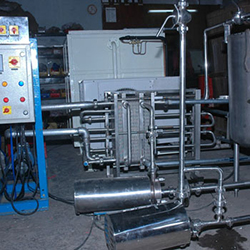Code : MDP

Our mini dairy plants comprise of following parts :
- HTST / Batch - Pasteurizer – 250LPH expandable to 500LPH
- Refrigeration System for same
- Pouch Filling Machine
- Butter Churn
- Cream Separator
- Manual Yoghurt Filling Machine
- Milk Analyzer
- Spares, Piping, SS Pump, etc.
Tanzania produces dairy products.
Cattle produce over 90% of the milk in Tanzania. Most of it is generated by low input, low yielding systems and consumed by the household of the producer.Business overview:
Tanzania, behind Ethiopia, Sudan, and Chad, boasts Africa's fourth-largest herd of cattle. For meat, milk, savings, and draught power, 31 million cattle are kept. Tanzania's centre region, the southern highlands, and the lake region are where the majority of cattle are found. The majority of cattle are domesticated breeds. Highland regions in the north and south are where you'll mostly find improved dairy cattle. $196 million USD (85% of the overall livestock value and 2% of the total agricultural value) was the gross production value of cow milk in 2016. Tanzanian cattle numbers. Zebu cattle, an indigenous breed, make up the majority of the cattle in Tanzania.The dairy industry in Tanzania has a lot of room for expansion. A pilot programme called Dairy 2025 assists dairy farmers in the Tanga region in adopting profitable, environmentally friendly practises and utilising the nation's most cutting-edge processing hub. Credit is made available through the programme so that participants can improve their farms and purchase services.

